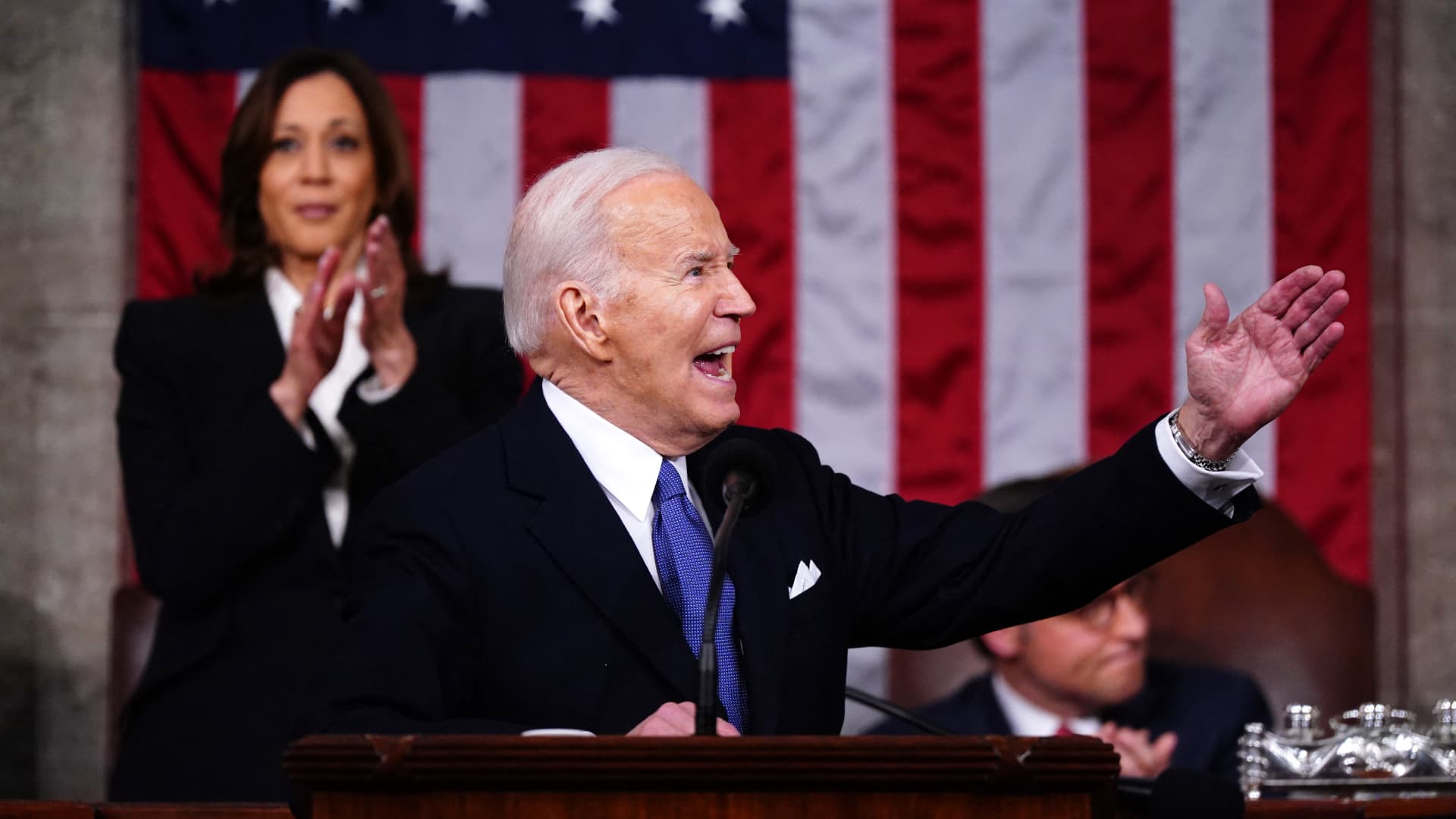In his State of the Union address Thursday night, President Joe Biden talked up his administration’s work to forgive the student debt of nearly 4 million people.
“When I was told I couldn’t universally just change the way in which we dealt with student loans,” Biden said, “I fixed two student loan programs that already existed to reduce the burden of student debt for nearly 4 million Americans, including nurses, firefighters and others in public service.”
After the Supreme Court blocked Biden’s sweeping student loan forgiveness plan in June, his administration has explored all of its existing authority to leave people with less education debt. It has now canceled debt for almost 3.9 million borrowers, totaling $138 billion in relief.
More from Personal Finance:
Many think pensions key to achieving American Dream
How to avoid unexpected fees with payment apps
‘Ghosting’ gets more common in the job market
Here’s what to know about the two programs Biden cited in his speech, which led to much of that aid.
1. Income-driven repayment plans
Income-driven repayment plans, which date to 1994, set borrowers’ monthly payments based on a share of their discretionary income. Those payments are typically lower than under standard repayment, and can be zero under some plans. Borrowers get any remaining debt forgiven after a set period. There are four different plans.
Yet many borrowers paid into the system for decades without getting that promised cancellation, said higher education expert Mark Kantrowitz.
“The loan servicers weren’t keeping track of the number of qualifying payments,” Kantrowitz said in a previous CNBC interview.
The Biden administration has been evaluating millions of borrowers’ loan accounts to see if they should have had their debt forgiven. So far, more than 930,000 people have benefited, receiving over $46 billion in debt cancelation.
Most people with federal student loans qualify for income-driven repayment plans, and can review the options and apply at Studentaid.gov.
Recently, the Education Department also announced it would cancel the debts of those who have been in repayment for a decade or more and originally took out $12,000 or less. To qualify, borrowers need to be enrolled in the administration’s new Saving on a Valuable Education, or SAVE, plan.
2. Public Service Loan Forgiveness
Navigating the Public Service Loan Forgiveness program has been famously difficult.
The program, signed into law by former President George W. Bush in 2007, allows employees of the government and certain not-for-profit entities to have their federal student loans discharged after 10 years of on-time payments.
The Consumer Financial Protection Bureau in 2013 estimated that one-quarter of American workers may be eligible.
However, after getting wrong information from their servicers about the program’s requirements, millions of borrowers hit walls. People frequently found that some or all of their qualifying payments didn’t count because they had a loan or were enrolled in a payment plan not covered under the initiative.
The Biden administration has tried to reverse the trend of borrowers being excluded from the relief on technicalities. It has broadened eligibility and allowed people to reapply for the relief, as long as they were still working in the public sector and paying down their debt.
About 790,000 public servants have gotten their debt erased as a result, amounting to more than $57 billion in relief.
With the PSLF help tool, borrowers can search for a list of qualifying employers under the program and access the employer certification form. They can also learn about all the program’s requirements at Studentaid.gov.
The remaining loan forgiveness of the $138 billion total has gone to borrowers who attended schools of questionable quality, to those who qualified through the Borrower Defense Loan Discharge and to disabled borrowers under the Total and Permanent Disability Discharge.
